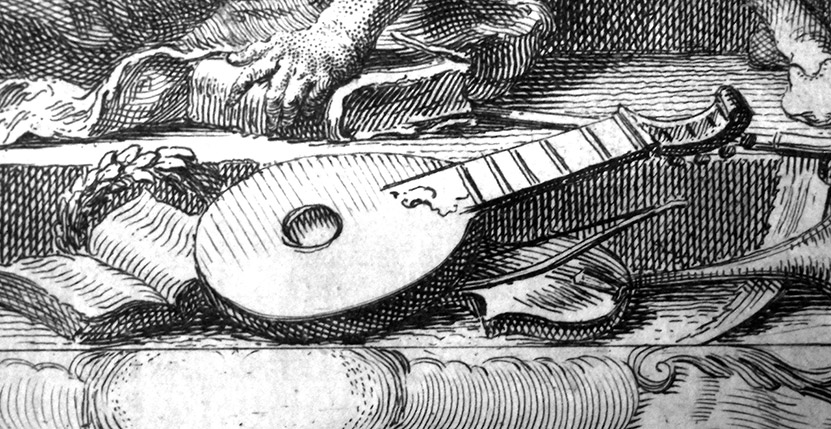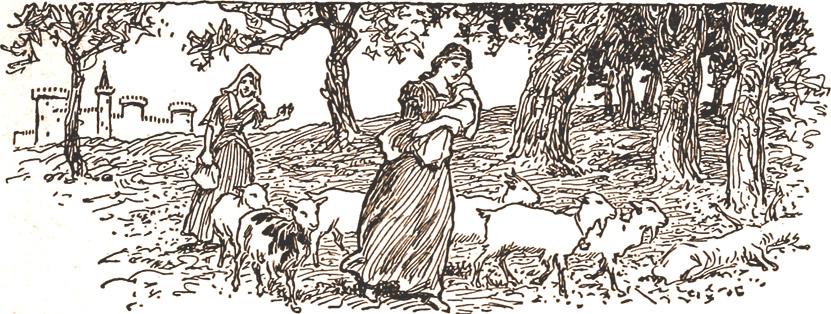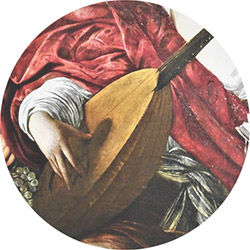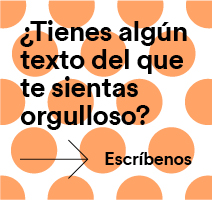Write
SONET VIII
Philological passion: the poetic forms of the past that shape the mysterious present.
that shape the mysterious present.
It doesn't matter how "old-fashioned" they are if they express
better express what you want to convey.
- It is possible to be "medieval" today.
Aqueste coraçón que habéis ferido
And you alone fizistes unhappy
And he walks without brains, and without reason, dexado
Of the joy and warmth of his beloved,
In such a way it fails in you lost
That, absent you from me, death has given me
And I live without living, abandoned
Of him who has not lived since he saw you.
If you loved me, you would give life in you.
You would give life in you. But do not love me,
Let that captive go free.
But I think that you want to kill me,
That I do not live without the one you keep
And he cannot live if you leave him.
|
What was my surprise when this cutie arrived in my mailbox. "People get bored in quarantine," some hater may think. But no. The sonnet was written long before this picturesque chaos we are enjoying and represents a fruit of what we call "philological passion". Here is Josefina Echavarría's answer to my astonishing "why?". |

The intention, although I did not develop it too much, was to exalt the language and show how, although we are no longer in the Age average or in the Golden Age, the ideas (represented in the vocabulary) of the time are not simply something anachronistic, but it is still possible to be "medieval" today. It is like in works of art in which they paint a character contemporary to Christ dressed as someone from the period in which the painting was made. I have tried to do something similar with this poem. I confess that I have not done it in a very rational way. That is to say, when I wrote it I did not think exactly all that I am saying now, but my underlying intention was that.
I was inspired by my great-grandfather, who was a poet and used words like "do" in some of his poems. His friends criticized him because he used old-fashioned vocabulary. My mother told me this anecdote a few years ago, and since then I have always wanted to write with old forms. To choose the lexicon, I have based myself mainly on the vocabulary of Amadís de Gaula, some parts of Don Quixote and different poems. I wanted to show that it doesn't matter how "old-fashioned" they are if they express better what you want to convey than the current vocabulary. And, in fact, that is what happened to me: while I was writing and thinking about what word to use to express this or that, the terms that seemed to me to be the most appropriate were old-fashioned. I could not think of a current word that would express what I wanted to say as well as that word from such and such an era or that one from such and such another. At summary, the use of this lexicon was not entirely voluntary but rather demanded by what I wanted to convey.
Josefina Echavarría, 2nd of high school diploma.
high school Abat Oliba, Barcelona

|
Even knowing the artistic intentions of the poem, we have order a Cristina Tabernero to make a brief commentary on the sonnet from a philological point of view. Cristina is a full professor of Spanish language at department of Philology of the University of Navarra, specialist in the History of the Spanish language , geographical and social variation, lexicography and lexicography. Apart from this, she is a wonderful professor . |
Dear Josefina, first of all, let me tell you that your motives and efforts are more than meritorious and admirable. To express your concerns, you have chosen a period of the linguistic development of the Spanish very appropriate, without any doubt, although for you still Age average and Golden Age constitute a unique linguistic reality: the Spanish "ancient"; from here, from the need to distinguish stages of evolution, are born precisely some of the questions that I will tell you below. Let us start, then, from the idea that you have constructed a medieval sonnet. The medieval language , as is evident, had not yet undergone the process of standardization, so it allowed a much wider range of possibilities than what we understand for the current system. Therefore, as long as the forms that appear in your sonnet are documented for the period being represented, it cannot be said that they do not belong to an ancient Spanish ; in any case, we can only speak of a level of frequency.
Let me note that some features of the poem, however, would not correspond to the medieval period, even ignoring the fact that we are not dealing with a homogeneous block in which there have been no changes from the beginning to the end. Seeing that it is a sonnet, we cannot think of the first centuries of the medieval period, but rather of the 15th century pre-Renaissance, the specific moment in which we would place your composition. I consider the intentions that justify a certain linguistic mixture that you make; however, we could finish adjusting your sonnet to this period, if we take into account the following appreciations, which, as I said, are based more on frequency criteria than on non-existent forms.
 I understand that we are dealing here with a modernized version whose purpose has more to do with poetic sensibility than with scientific fidelity. But if the claim were to reproduce the Spanish of the Age average, it would be appropriate to express it with the GRAPHICS and the PHONETICS of the time. For example, the graphical forms of the verb seewhich would not appear with h (habéis, ha)The same way that it would not be read with b but with u o v.
I understand that we are dealing here with a modernized version whose purpose has more to do with poetic sensibility than with scientific fidelity. But if the claim were to reproduce the Spanish of the Age average, it would be appropriate to express it with the GRAPHICS and the PHONETICS of the time. For example, the graphical forms of the verb seewhich would not appear with h (habéis, ha)The same way that it would not be read with b but with u o v.
The conjunction y would not appear as it does in the composition but as e; only later would it be written y, although this was the pronunciation from long ago. Likewise, the adverb of negation would not graphically conserve the final Latin -n until the 16th century, although, as in the previous case, there was no phonetic repercussion.
About PHONETICS y GRAMMAR it is worth mentioning three verb forms that might not have been common at that time, contradictory, moreover, with others from the same sonnet (amades, desseades, amassedes): habéis would not have lost the dental(d) or, even reduced by the accentual weakness of the contexts in which it is used, it would not have been diphthongized, at least (the most common forms would be avedes, edes, eis), as well as conserváiswhich would more likely be conseruades. The loss of these forms will begin to be accentuated from the 15th century onwards.
The same is true of the conditional daríais: the sdruffular forms would lose their dental form even later -in the 17th century- than the flat forms. Regarding this verb tense, it could be said that perhaps it was more frequent for the indirect complement to be repeated pronominally(al afligido le daríais) and, in this way, the form of the conditional would recover the two parts of its origin to emphasize precisely the person who receives the action ("al afligido dar le iedes"). The outline conditional you employ in your sonnet(si -se, -ría), although possible, would more often be heard as si amassedes, diessedes. In any case, both the single-form conditional and the outline si amassedes, daríais would not be surprising, especially since we are on the border of medieval Spanish.
With the same frequency criteria, the form fezistes would be more common than the variant with -i- (fizistes) used in your sonnet.
Se grade how sensitive you are to LEXICON. The vocabulary you have chosen for the sonnet is totally appropriate, even if it is from different sources and, as you say, in an intuitive way. I can only make a few minor comments.
Although it cannot be said that some of the words used in your composition do not exist in medieval times, only two of them - querida, as a noun, and afligido - do not register during these centuries a very high usage; their validity is not disputed but their generalization. The expression my dear is used several times, for example, in the medieval romance Bible but not in many other writings in that context.

Garci Rodríguez de Montalvo (woodcut of the first known edition, author of the 4th book), Amadís de Gaula. BUY Vol. I
Miguel de Cervantes, Don Quixote de la Mancha. BUY.






